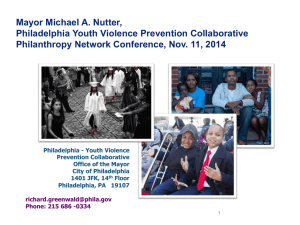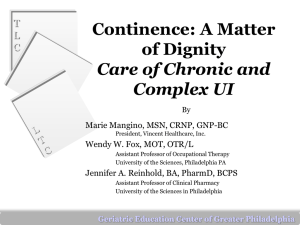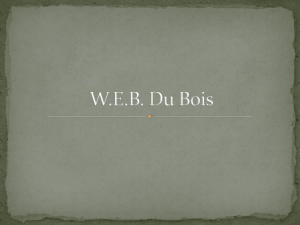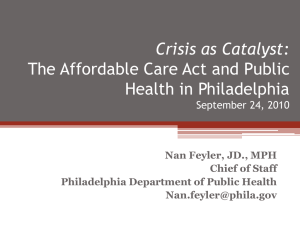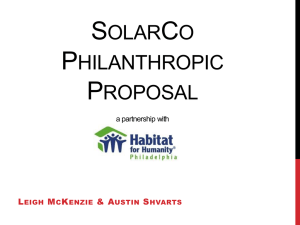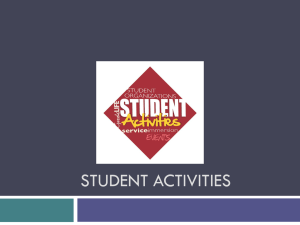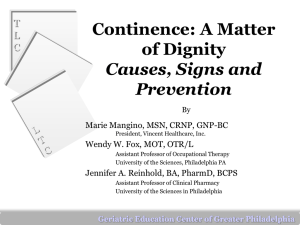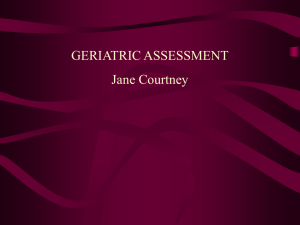Module 1: Falls - Instructor`s PowerPoint Slides with Speaker`s Notes
advertisement
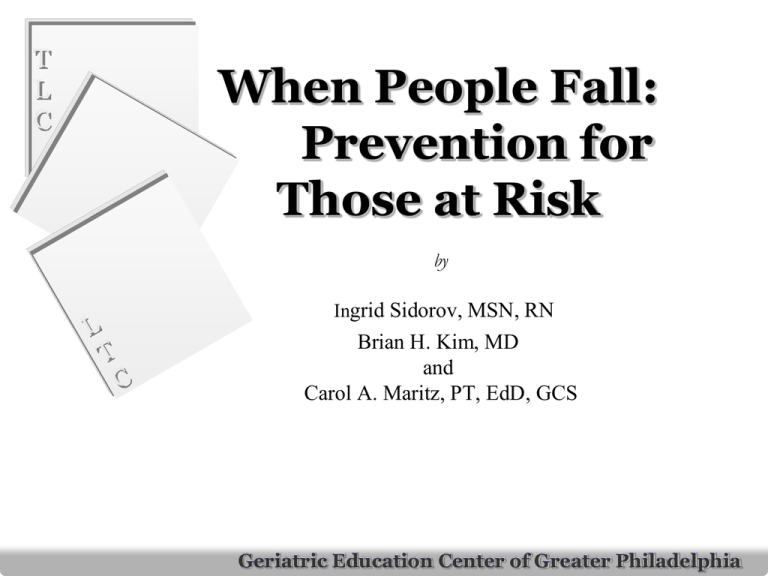
T L C When People Fall: Prevention for Those at Risk by Ingrid Sidorov, MSN, RN Brian H. Kim, MD and Carol A. Maritz, PT, EdD, GCS Geriatric Education Center of Greater Philadelphia T L C Why Talk About Falls? Falls happen often 1 in 3 older adults fall each year; 1 in 2 in long term care fall each year Falls are dangerous 25% of falls cause minor injury 11% of falls cause major injury such as hip fracture 88% of falls are related to medical and or physical conditions Many (about 2/3) fall associated injuries and deaths can be prevented Geriatric Education Center of Greater Philadelphia T L C Seriousness of Falls After older adults fall 40% become less active 40- 70% report fear of falling Almost 10% go to the ER for treatment after falling Falls may be a warning sign of new or worsening illness. Geriatric Education Center of Greater Philadelphia T L C Objectives At the end of this program you will be able to: 1. Identify risk factors and common causes for falls. 2. Describe proper assessment after a fall. 3. Discuss intervention and prevention strategies. Geriatric Education Center of Greater Philadelphia T L C Who Falls? Older adults who are acutely ill. Older adults admitted to a new setting. Those with functional loss. Elders with problems walking, hearing, vision and memory. Geriatric Education Center of Greater Philadelphia T L C Where do Falls Happen? » 10% in long term care » 30% in public places » 60% at home Geriatric Education Center of Greater Philadelphia T L C Age-Related Risk Factors Consider age-related changes: Gait Posture Muscle Strength Balance issues Response to medication Response to stress Reduced vision or hearing Urinary frequency/incontinence Geriatric Education Center of Greater Philadelphia T L C Fear of Falling • About 30% of older adults have a fear of falling. • This includes people who have NOT fallen. • Fear of falling affects how people react to their environment and actually increases the risk of falling. Geriatric Education Center of Greater Philadelphia T L C Should a Single Fall be of Concern? • ABSOLUTELY! • Every fall has the potential for being serious. • Consider changes in health, risk factors. Geriatric Education Center of Greater Philadelphia T L C Health Problems As Risk Factors 1. Heart disease and stroke 2. Diabetes 3. Osteoporosis 4. Gait disorders 5. Depression 6. Polypharmacy 7. Dementia Geriatric Education Center of Greater Philadelphia T L C Cognitive Loss As a Risk Factor Anxiety from not recognizing environment Lack of insight and judgment about safety Sundowning Behavior issues Geriatric Education Center of Greater Philadelphia T L C Environmental Risk Factors Lighting Flooring/Pavement Stairs Furniture Equipment/Physical Obstruction Improperly fitted clothing Geriatric Education Center of Greater Philadelphia T L C Assessment After a Fall: What Should Staff Do? Assess all skin and joints for injuries Check vital signs Move to a safe location off floor Notify nurse supervisor Notify family member Geriatric Education Center of Greater Philadelphia T L C Strategies to Compensate for Physical Impairment: Impairment Approach Sensory loss Eyeglasses and hearing aids Exercise – Physical therapy consult Restorative mobility program Assistive devices Muscle weakness Geriatric Education Center of Greater Philadelphia T L C Strategies for Cognitive Loss Biographical profiles Communication/re-direction Structured daily routine A security system Exercise Geriatric Education Center of Greater Philadelphia T L C Strategies for Incontinence Medical evaluation A consistent toileting program Proper bathroom equipment Constipation may be the cause Geriatric Education Center of Greater Philadelphia T L C Prevention and Management Program Assess each person in your care Provide a safe and enabling environment Implement balance and fitness programs designed by PT Educate families and staff about falls and a restraint-free environment Geriatric Education Center of Greater Philadelphia T L C SAFE ENVIRONMENT • • • • • • Lighting Handrails Chair height Equipment and items in reach Shoes that fit Carpeting Geriatric Education Center of Greater Philadelphia T L C THE BATHROOM • • • • Grab bars by shower and toilet Rubber mats in bathtub/shower Raised toilet seat Drawers kept closed Geriatric Education Center of Greater Philadelphia T L C Prevention and Management: Fitness & Activity Programs Individual programs: Exercise, selfcare, walking Group programs: Exercise, yoga, walkercise, games/sports, dance/movement, tai chi Other activity: Art, cooking, gardening, “mental gymnastics” Geriatric Education Center of Greater Philadelphia T L C Prevention and Management: Fitness & Activity Programs • Exercise programs – Incorporate both balance and strength training – Balance training should include both static and dynamic activities performed at moderate to high challenge – Ideal program duration – 3-12 months Geriatric Education Center of Greater Philadelphia T L C Education Program Staff education for each caregiver role Safety education and fall/injury prevention for all: Staff, older adults, and family Relaxation techniques Geriatric Education Center of Greater Philadelphia T L C Education Program Education of the person at risk for falls Nurses are responsible for education programs of older adults. CNAs should remind older adults of safe techniques as they complete assigned tasks. Geriatric Education Center of Greater Philadelphia T L C Objectives Review Can you now 1. Identify risks factors and common causes for falls? 2. Describe proper assessment after a fall? 3. Discuss intervention and prevention strategies? Geriatric Education Center of Greater Philadelphia T L C Thank you for your attention! The End Geriatric Education Center of Greater Philadelphia


